Roof Vents – The Benefits of Installing or Repairing Them
Rain Heads Custom Made Shipped Free Australia Wide – Click Here >
Dambuster Rain Heads Shipped Free Australia Wide – Click Here >
Commercial Industrial Roof Vents 300mm-950mm – Click Here >
Eco-Friendly Roofing Insulation Shipped Free – Click Here >
Gutter Sumps Shipped Free Australia Wide – Click Here >
When you need to have a roof replacement on your home, it can be an incredibly stressful situation. The expense of the replacement alone is often the reason that homeowners have been known to have multiple repairs performed on their roofs instead of immediately selecting the reroof option for their home.
See Our Prices for Supply & Installation in Sydney – Click Here
One of the most expensive replacements you’ll make on your home is your roof. Typically, as a homeowner, you’ll try to patch and repair any leaks or soft spots until you are absolutely at the last possible moment with your current roof, because no matter what style or material roof you choose, it’s going to be a costly replacement.

Ventilation Extends Roof Life
That being said, prolonging the life of your new roof starts with proper ventilation. Usually, there are two different style roof vents that most homeowners are familiar with.There is the ridge cap style of vent, and the wind-driven rotary roof vent, or whirlybird. Before having your roof work started, you’ll want to make sure to discuss with your roofing contractor exactly how many roof vents you currently have, and if they will all be necessary with the new roof install, or if the contractor advises that you don’t need as many going forward. Although you may currently have a ridge cap style vent in your roof, you can have a rotary roof vent installed either on your existing roof, or as part of your roof replacement job.
As a rotary roof vent is not a complicated installation, discussing this with your roofing contractor should tell you if it can be done with minimal issues and costs. The benefits of having wind-driven rotary roof vents, also known as whirlybirds, mostly are situated around the fact that with the rotary roof vent there are essentially no upkeep costsThe vent is wind-powered, so it requires no wiring nor electricity to operate. Also, the rotary roof vents are typically made of aluminum to prevent rusting, and as they aren’t constructed of complicated parts, consumers typically don’t have any problem with their maintenance.
See Our Prices for Supply & Installation in Sydney – Click Here
Whirlybirds Work In Winter
Proper roof ventilation not only prolongs the life of your existing roof, but during the winter it prevents ice dams from forming on your roof. In the summer, attic air being ventilated through your roof reduces the growth of mould.
Hot, stale air in combination with poor air quality can cause a build up of toxic fumes, mould, and air pollutants that can be harmful to everyone in your home. A rotary roof vent forces these fumes and allergens out along with your hot, stale attic air.
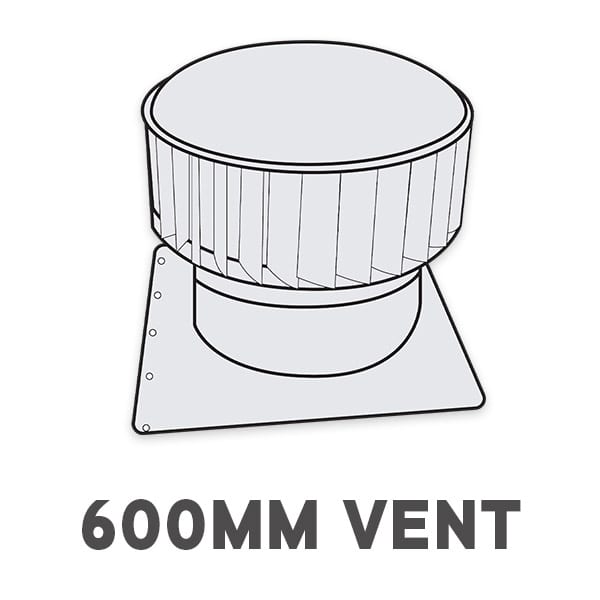
Supply & Installation Price
Sydney Metro Only
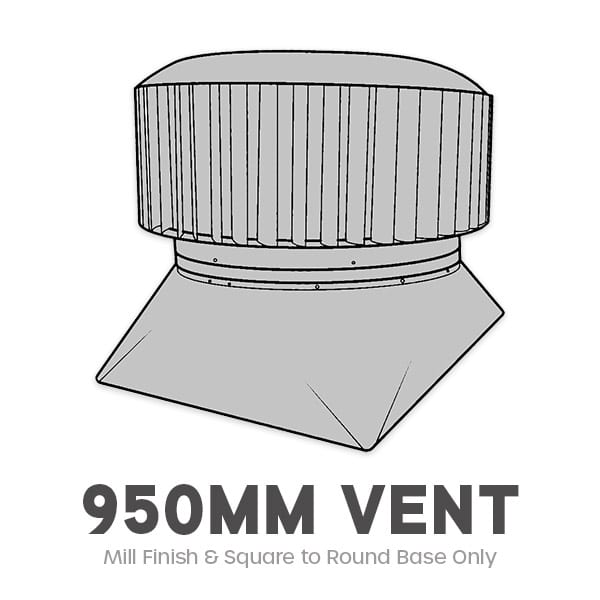
Supply & Installation Price
Sydney Metro Only
3 Roof Vent
Supply & Installation Price
$1,090/3

3 Ampelite 300 Spinaway
Colorbond or Mill Finish Supply & Installation Price
Download PDF
4 Roof Vent
Supply & Installation Price
$1,300/4

4 Ampelite 300 Spinaway
Colorbond or Mill Finish Supply & Installation Price
Download PDF
Contrary to popular belief, although it looks like the rotary roof vent would allow rain and snow to travel into your attic, tests have shown that they do not. Their design is such that they aren’t sucking in air or condensation, as their job is to expel the hot air and condensation from your attic space. Even in hurricanes and blizzards, the rotary roof vent has been shown not to leak or draw moisture into your home.
Rotary roof vents move a good deal more air than ridge cap vents, and when used in conjunction with a large diameter fan they can reduce your interior temperature by ten degrees Fahrenheit.

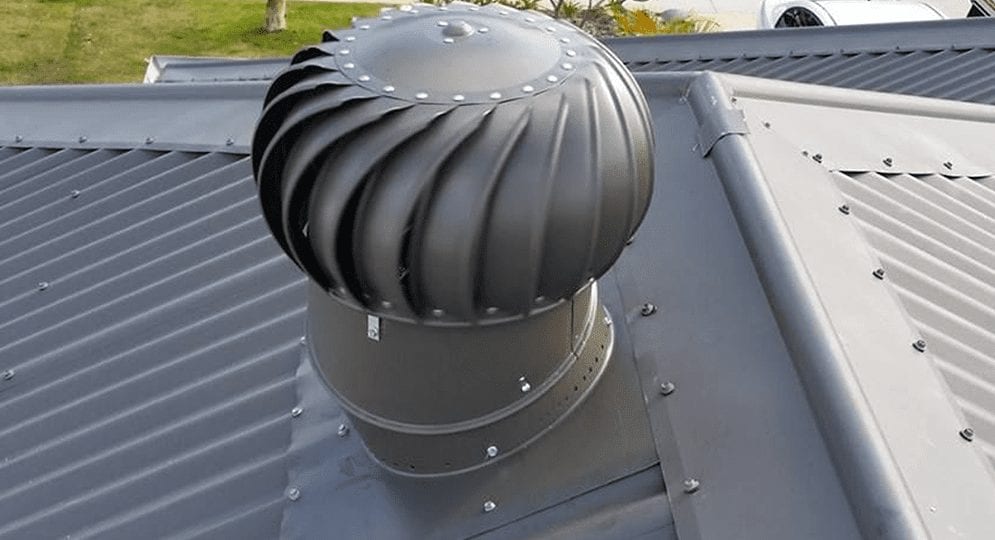
How Does Roof Ventilation Save You Money?
By helping to push the hot air that has accumulated in your attic to the outside, proper roof ventilation can prevent your home from having major temperature differences between floors. This removal of the hot air will save you money on your cooling bills. Also, proper roof ventilation can prevent many problems from arising in the future with your home due to the build up of condensation, mildew and mold.
In the summer, roof ventilation helps to ensure that your air conditioning doesn’t have to run non-stop to keep up with the heat that is seeping through your roof into your home. In the winter, roof ventilation keeps you from having to repair damage caused to your home by ice dams.
See Our Prices for Supply & Installation in Sydney – Click Here
A rotary roof vent can save you substantial amounts of money in the long run. By preventing ice dams from building up on your roof, over time the rotary roof vent is preventing water damage to your roof decking and the interior of your home. It is also preventing damage to your shingles, eaves, and gutters by keeping heavy build up of ice from remaining frozen and destroying the integrity of your fixtures with the weight of the ice.

How Does Condensation Accumulate In My Attic?
The water vapour in your home naturally rises and often is trapped inside your attic space. When a rotary roof vent is in place, it will quickly expel this moisture to the outside of your home. However, if that water vapour isn’t quickly exhausted from your attic, it will condense on cold roof framework and roof sheathing.
The accumulated vapour can then drip from the underside of the roof, and if the temperatures drop, it can freeze inside of your home. When that frozen water thaws, you’ll have puddling, which will encourage the growth of mold and mildew. Rotary roof vents can help to quickly wick away that moisture, expelling it from your attic or crawlspace and keeping the interior of your attic and underside of your roof dry and undamaged.
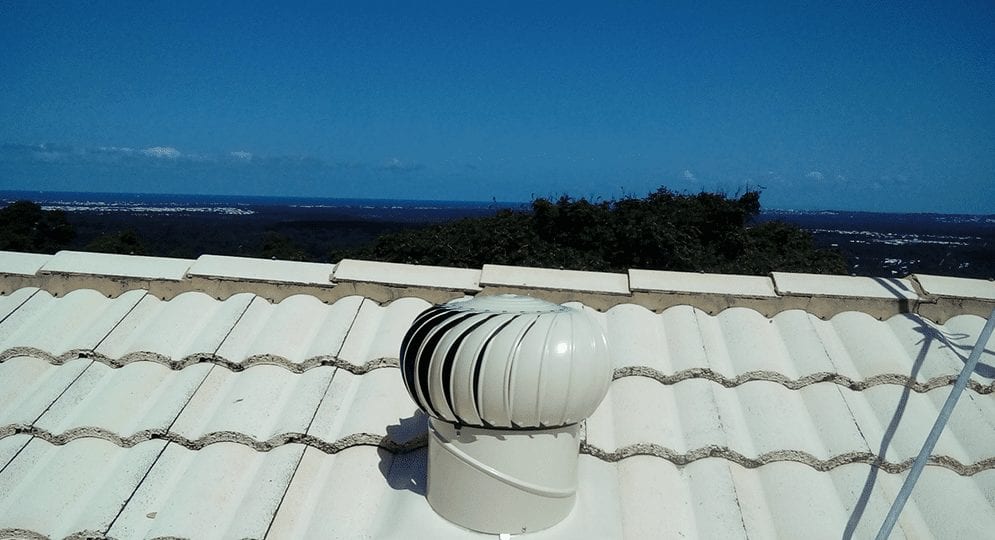
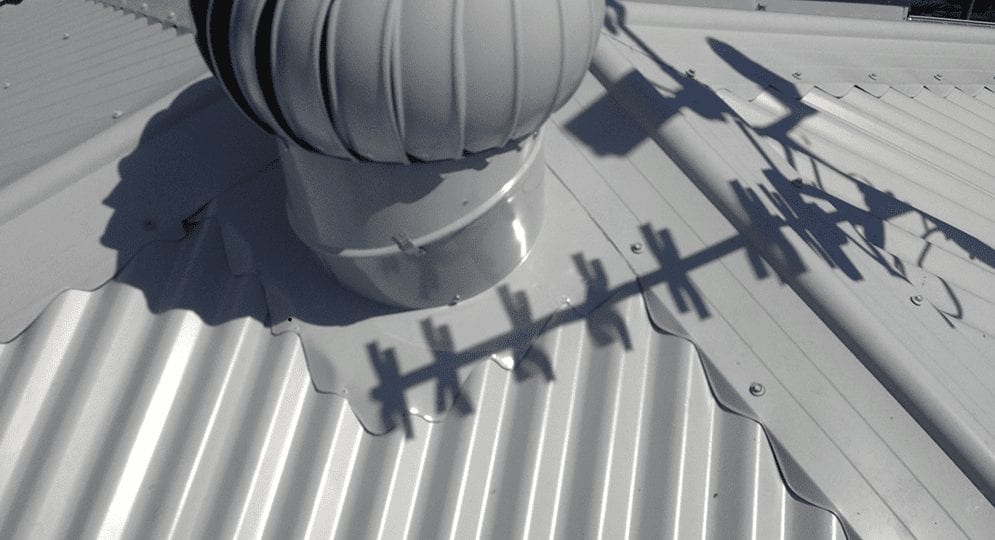
Is It Costly To Operate A Rotary Roof Vent?
Rotary roof vents are completely wind driven, which means no expense in wiring and running the exhaust system. The rotary roof vent is also almost completely maintenance free, and they are also built to withstand any adverse weather condition you can think of.
Due to the expulsion of hot air during the summer, this vent can actually save you a noticeable amount of money on your electric bill, as it can keep your home markedly cooler, and will also prevent a noticeable temperature difference between the floors of your home.
See Our Prices for Supply & Installation in Sydney – Click Here
A rotary roof vent can save you substantial amounts of money in the long run. By preventing ice dams from building up on your roof, over time the rotary roof vent is preventing water damage to your roof decking and the interior of your home. It is also preventing damage to your shingles, eaves, and gutters by keeping heavy build up of ice from remaining frozen and destroying the integrity of your fixtures with the weight of the ice.
By preventing mold and mildew from occurring because of moisture not being expelled quickly from your home, the rotary roof vent will prevent thousands of dollars worth of repairs in mold remediation.

Are These Vents Really Maintenance Free?
When purchasing a rotary roof vent, you should make sure that it is made from aluminum, because that will ensure that it won’t rust over time.
If it starts to squeak after a long period of use, you will just need to use silicone lubricant to lubricate the bearings, and it will be back to its’ silent, maintenance free ventilating.
The only issues that have been reported are not actually maintenance problems with the vents themselves, but with the installation not being performed correctly,
leading to leaks around the vents. This can happen if the flashing that is used around the vent to seal the hole in the roof is not applied correctly, or if any gaps are left between the vent and the roof material.
See Our Prices for Supply & Installation in Sydney – Click Here
If My Vent Isn’t Turning, What’s The Issue?
The first thing that you’ll want to do is inspect the interior from your attic. Do you see any blockage? Has the vent perforation somehow gotten debris hung inside it, or insulation that is preventing the turbine from rotating? If you can not see any blockage, this will be the time when it is necessary to inspect the vent from the roof. If you’re not comfortable climbing onto your roof to do an inspection, this is when you’ll need to hire a licensed roofing contractor to come out and inspect the turbine vent.
Chances are, if there is no blockage, the vent may not have been installed correctly. If the rotary roof vent is not installed completely level, they won’t turn. That means, if you can see the vent is sitting at even a mild incline, it was not installed correctly, because the vent is not going to turn at an angle.

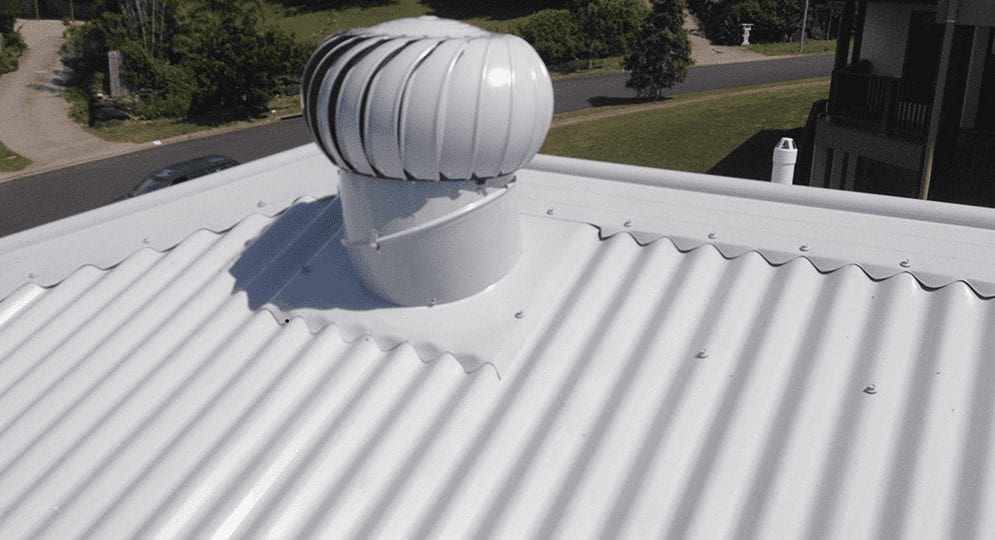
Do I Need Roof Vents? I Live In A Very Cold Climate?
Roof vents aren’t just necessary to allow heat to escape the attic in warmer climates. Roof vents are just as necessary in homes in cold climate regions. Roof vents help to keep your roof free of ice dams, which can be very damaging to your shingles, gutters, and soffit.
Also, try to remember that your home isn’t going to be losing furnace heat through your roof vents. There is no reason that your furnace piping should run into your attic. The temperature of your attic should be just about the same as the temperature outside of your home.
How Much Heat Does A House Gain From The Roof?
Typically, roof heat accounts for anywhere from 25 to 35% of your home’s heat gain during the summer. That’s second only to your windows. The difference is, of course, you can use blinds or curtains over your windows, but you cannot buy blinds or curtains for your roof.
What occurs is that as your roof is heated by the sun, that heat starts to seep down into your house, first through the roof decking, then through your ceilings until you’re forced to combat the heat with your air conditioning system. When you have rotary roof vents in place, they help to disperse some of this heat that is creeping down into your home and raising the temperature.
Although the heat may only be noticeable when moving between floors in your home, it is actively taxing your air conditioner to keep up with the extra heat dispersion to keep your home feeling pleasant and cool.

Why Should Vents Not Be Blocked Off In The Winter?
Anytime you block off a roof vent for any reason, you are allowing the water vapor that has collected from your home and drifted into your attic space. That vapour needs to quickly be exhausted to the exterior of your home, otherwise, it will find a place to condense inside your attic if it is trapped in your home with no way out. Typically that results in the moisture condensing on roof framing and roof sheathing, and starting a drip from the attic.
If the temperature should drop while a vent is blocked off, trapping moisture in your home, the vapour will actually freeze and form ice inside your attic. Any trapped moisture inside of your home is mildew and mold waiting to happen. Not only is mold remediation costly, but the health effects of living with mold are exponential. It can cause serious respiratory issues, especially in children and the elderly.
Always ensure that your roof vents are in no way blocked, no insulation has been misplaced inside of the vents, and that the rotary roof vent isn’t bound and can turn as the breeze reaches it.
What Should My Main Factors Be When Installing Rotary Roof Vents?
Firstly, the ability to add years to the life of your roof should be a great motivating factor for installing rotary roof vents. By preventing moisture accumulation to cause damage to the roof framing, it will help to ensure that there isn’t wood rot and mold damage to the framework of your roof. Secondly, by ensuring that ice dams don’t form on your roof in the winter time, you’re preventing damage to shingles, gutters, and eaves on your home.
The amount of savings over time in cooling bills is also a substantial motivation to most homeowners. With the assistance of rotary roof vents in pushing hot air from your attic, and cooling the surrounding roof area by releasing the trapped heat underneath, the marked difference in cooling bills has been a reason to install rotary roof vents for many years. Not only does this save you wear and tear on your air conditioning unit by helping it to run less often, but it also presents the savings on your utility bills.
If you have a damaged or defective rotary roof vent, you would definitely benefit in having it replaced by a certified roofing contractor. It is actually quite reasonably priced to have a rotary roof vent replaced, and it doesn’t require any mess to be made, or any special provisions for the contractor performing the work. Basically, as long as it is a sunny day and your roof is dry, it should be a simple task to remove the existing roof vent, install a new roof vent, and flash it into your roof.
If you are a handyman, you may have actually performed a replacement of a rotary roof vent in the past. Most handy homeowners who aren’t afraid of heights have been able to replace these vents with out any major problems in completing the job. The biggest problem that homeowners have reported about replacing rotary roof vents in the past is that if the flashing around the vent isn’t carefully applied to ensure that every bit of the vent is well sealed around the edges, a water leak in the area is sure to occur.
Contrary to popular belief, although it looks like the rotary roof vent would allow rain and snow to travel into your attic, tests have shown that they do not. Their design is such that they aren’t sucking in air or condensation, as their job is to expel the hot air and condensation from your attic space. Even in hurricanes and blizzards, the rotary roof vent has been shown not to leak or draw moisture into your home.
Most certified roofing contractors should be able to inspect your rotary roof vent and advise if it is merely bound and in need of a clean out and lube, or if you need to replace it. The great news is they’re usually under one hundred dollars at your local hardware store. The flashing around the vent will probably be the most difficult part in lining the job up.
If you cannot perform the repair on your own, most any general contractor, or roofing contractor should be able to perform a replacement for you in under an hour. Once you schedule the roofer to perform the inspection, he will be able to provide an itemized estimate for the work, but in the past it has been relayed to be a very reasonable charge in most cases, unless additional shingle replacement, or other damage repair needs to be performed while the rotary roof vent is replaced.
All in all, by having rotary roof vents installed in your roof, statistics state that it will lessen your heating and cooling bills, and it will also add years to the life expectancy of your roof.
See Our Prices for Supply & Installation in Sydney – Click Here

